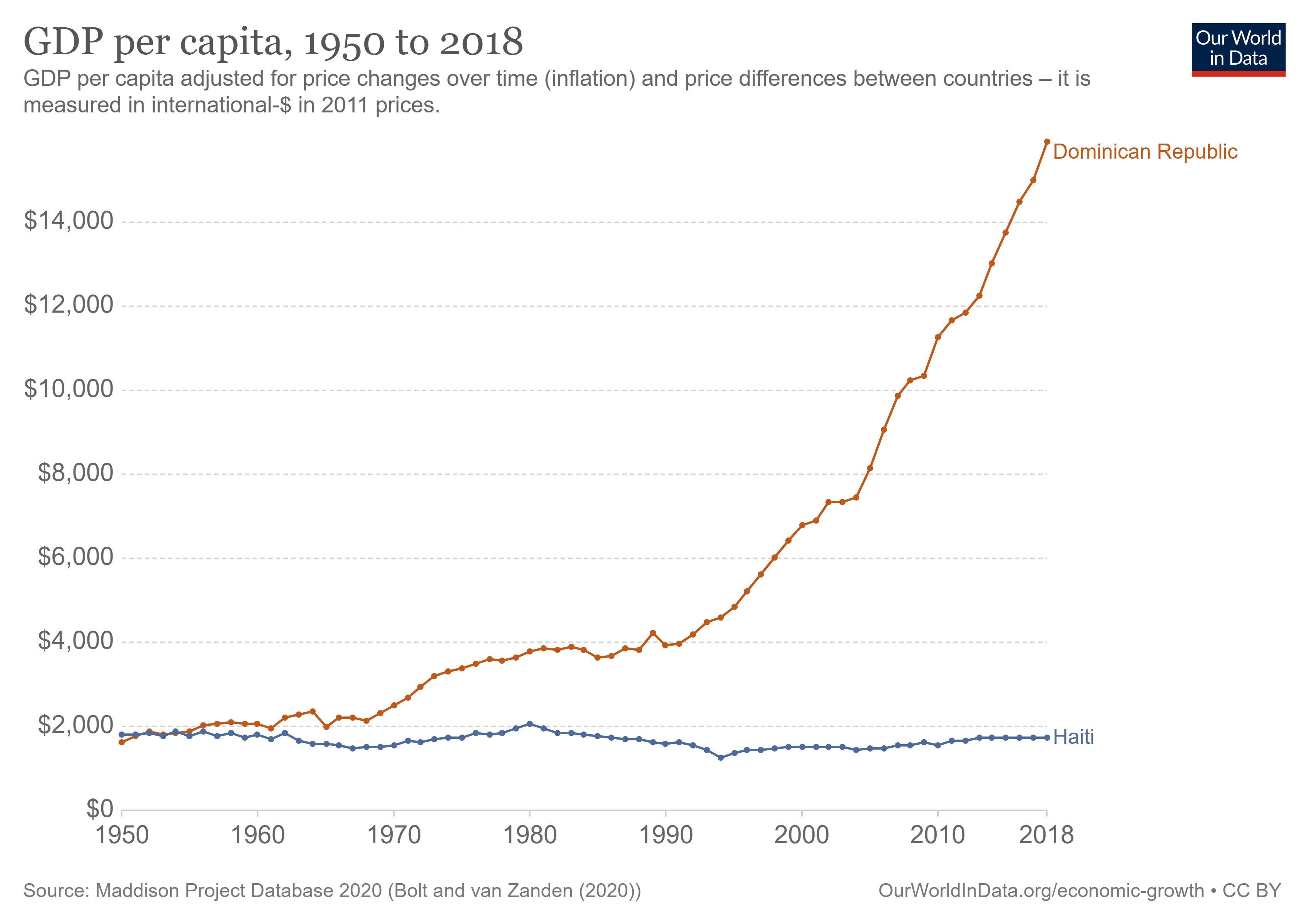Mar
2024
Two Sides of the Same Island
Haiti and the Dominican Republic are two relatively small countries in the Caribbean that share the island of Hispaniola. Despite their close proximity, the two countries are in very different places regarding government, economy, and just about any other aspect that defines a country. While the Dominican Republic has been booming in recent years, Haiti has descended into chaos. But what makes these countries so different?
Haiti’s Demise
While Haiti has never been a particularly rich or prosperous country, since 2021 it has reached a new low. On the topic of corruption, the Haitian government has not had an election since 2016, when President Jovenel Moise was elected. Moise had a mixed public opinion while in office, but he was accused of being corrupt which led to massive public protests against him. Whether or not these allegations were true is still unknown, but they ultimately led to his assassination in 2021.
The strange part about Moise’s assassination is that he appointed a new Prime Minister, Ariel Henry, just two days before being killed. These were very suspicious circumstances and many believe that Henry had something to do with the former president’s death. Following the death of President Moise, Henry rose to power in Haiti without ever being elected or ratified by Haiti’s senate. Since coming to power, Henry has also delayed elections (Haiti has now not had an election in 8 years).

Haitian Prime Minister, Ariel Henry, shortly after the assassination of President Moise. (Source)
To add fuel to the fire, Haiti was hit by a catastrophic earthquake just 2 months after Ariel Henry gained power. The chaos that ensued saw many Haitians refuse to recognize Henry as the true leader of their country, which gave heavily armed gangs the leverage they needed to seize large areas of the country by force. Since 2021, violence in Haiti has skyrocketed, with most deaths coming from the gang war raging in the capital city of Port-au-Prince.

Gang violence and chaos in Haiti’s capital. (Source)
Not only was Haiti’s current government built by suspicious actions that have corruption written all over them, but the government has essentially no power to stop gang violence. The Haitian people do not consider Ariel Henry their leader, and violence holds all power. This country is by all means, lawless.
The Dominican Republic’s Boom
To understand why these countries are so different, we need to go all the way back to European colonialism. When Hispaniola was colonized, it was separated into a French colony (Haiti) and a Spanish colony (Dominican Republic). The French imported hundreds of thousands of slaves to work on plantations in Haiti, while the Spanish only had around 30,000 of their own slaves. In time, the Haitian slaves revolted due to their vastly greater numbers than the French plantation owners, which led to Haiti declaring independence.
In order to be recognized as a true nation, Haiti was forced to make reparations to France for the property lost in the war. Long story short, it took Haiti multiple loans and around 120 years to pay off its debt. On the other side of the island, the Dominican Republic had also gained its independence, but without millions of dollars in debt.
Years of dictatorship, foreign occupation, and a civil war later, the Dominican was finally set on the right path when the United States successfully set up democratic elections in the country, which have survived until today. Meanwhile, Haiti had a period of dictatorship that lasted much longer than in the Dominican Republic. Since the 1960s when the Dominican Republic broke free from the chains of a dictatorship, it has continuously worked to stabilize its government and grow its economy. Foreign investors like to put money into countries that have more political stability, so it is no surprise that the Dominican Republic has seen much more investment than Haiti.

Graph comparing the economic growth of the Dominican Republic vs. Haiti. (Source)
The Dominican Republic’s significant government and economic reforms have left it in a state of unprecedented growth, with it being one of the fastest-growing economies in the Americas. Just over the border, a history of corruption in Haiti has left it as a nearly failed state, in utter chaos. History has consequences, and Haiti and the Dominican Republic are prime examples of this phenomenon.
rbp5525
April 12, 2024 at 2:57 pm (8 months ago)I really enjoyed the comparison you included in this article. I think including Haiti’s next door neighbor, the Dominican Republic, was a great way to show just how corrupt Haiti has become. The story with the current leader is extremely interesting and definitely suspicious. How was Henry able to rise to power so quickly, without being ratified? Was there no other alternative after the president’s Assasination?
ijp5139
April 13, 2024 at 2:34 am (8 months ago)It seems to be common for there to be a correlation between a country being corrupt and a history of colonialism and imperialism. I think that this is because a colonized country is often set up for failure because the colonizers don’t want the colonies to be self-sufficient. This means that once a colony is no longer colonized, they don’t have the means to succeed as an independent country. This inevitably leads to the corruption that we often see. In the case of Haiti, this is made even worse since the reparations are just further inhibitors to its success as an independent nation.